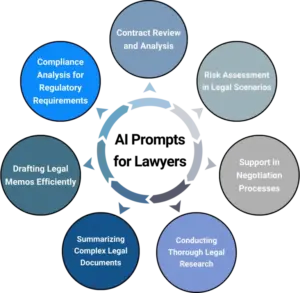Effective contract management is essential for the success of any business. It ensures that contracts are handled efficiently, risks are minimized, and compliance is maintained. One of the key practices for effective contract management is setting up Key Performance Indicators (KPIs).
KPIs are specific, time-based, measurable goals that track the progress and performance of contracts. They provide valuable insights into contract efficiency, value, risk, and performance.
In this blog, we will explore the 7 essential KPIs for effective contract management. These KPIs cover various aspects of contract management, from contract cycle time to supplier or partner performance levels.
We will also discuss how to implement contract management KPIs, establish a baseline for measurement, and use tools and technologies for tracking KPIs. Additionally, we will delve into advanced strategies for KPI optimization, including leveraging AI for KPI analysis and using predictive analytics for proactive management.
What is a Contract management KPI?

A Contract Management Key Performance Indicator (KPI) is a way to measure how well contract management processes are working. These KPIs help us understand things like how quickly contracts are dealt with, how risks are handled, and if contracts meet legal and organizational standards.
By finding and tracking the right KPIs, organizations can see how good their contract management is and where they can improve. These indicators give a quick look at how well contract management is going, so teams can see what’s going well and what needs work, and make decisions based on data to make things better.
This can help measure how well contracts are managed. For instance, they track how fast contracts are finished, how often contracts get renewed, and how much money is saved compared to the total contract value.
They also look at how well risks in contracts are handled, how suppliers are doing in meeting contract needs, and if contracts follow rules and are clear. Additionally, they count the total number of contracts managed. These KPIs give organizations valuable insights to improve their contract management processes and achieve better results..
By keeping track of and analyzing these KPIs, organizations can pinpoint areas needing improvement, make informed decisions, and make their contract management practices more effective to achieve better results.
Related Article: 4 KPIs for Contract Management Success
7 Key Performance Indicators for Effective Contract Management
To do contract management well, it’s important to keep an eye on different parts of the contract process. Seven important measures, called key performance indicators (KPIs), help with this. They’re crucial for watching and improving how contracts are managed.
1. Contract Cycle Time

Contract cycle time is like a stopwatch for contracts. It tracks the time it takes for a contract to go from negotiation to being signed and sealed. When this time is short, it means things are moving smoothly and quickly. But when it’s long, it’s a sign that there might be some problems or hold-ups in the process.
By keeping an eye on contract cycle time, companies can pinpoint exactly where things are slowing down. Maybe negotiations are taking too long, or there’s a delay in getting signatures. Whatever the issue, knowing about it helps fix it, making the whole contract process faster and smoother.
This measurement also helps companies evaluate the performance of their contract managers. If contract cycle times are consistently long, it could indicate that managers need additional support or training. Conversely, if times are short and contracts are processed quickly, it suggests effective management practices.
In essence, contract cycle time serves as a valuable indicator for ensuring contracts progress smoothly and remain on schedule. It allows organizations to identify areas for improvement and ensure that contract management processes are efficient and effective.
Related Article: How Much Are You Losing Without A CLM Platform?
2. Standard Clauses Usage

Ensure high contract compliance by monitoring standard clauses usage. Analyze how frequently these clauses are included to assess risk mitigation effectiveness. NLP technologies can assist in tracking and evaluating the usage of standard clauses across contracts.
By leveraging this data, organizations can enhance contract management practices. Transparency in adhering to standard clauses signifies effective contract administration. Consider employing NLP tools for an in-depth analysis of clause performance.
Tracking variations in standard clauses utilization provides insights for refining future contract terms and minimizing potential risks. Evaluate the impact of standard clauses on overall contract efficiency and risk management strategies.
Related Article: 7 Key Contract Clauses Found In Business Contracts
3. Percentage of Contracts Renewed

The percentage of contracts renewed serves as a vital gauge in contract management, shedding light on the frequency with which contracts are extended according to their initial terms. A high renewal rate signifies effective contract management practices and successful maintenance of relationships with contract parties.
By tracking this measure, companies gain valuable insights into the underlying factors driving contract renewals and how to prolong contract lifecycles. Understanding the reasons behind contract renewals enables organizations to identify areas of strength and areas for improvement in their contract management processes. By leveraging this information, companies can enhance their practices to ensure that a greater number of contracts remain active over time.
This not only fosters stronger relationships with contract partners but also ensures continuity in business dealings, ultimately contributing to long-term success and sustainability. Through proactive management of contract renewals, organizations can cultivate trust and reliability, positioning themselves for continued collaboration and mutual benefit with their partners.
4. Type of Contract

When analyzing contract management KPIs, evaluating the type of contract is crucial. Distinguishing between various contract types allows for tailored strategic approaches and risk assessments. Different contract categories like sales agreements, service contracts, or vendor partnerships necessitate unique management strategies to maximize value and mitigate risks effectively.
By tracking performance metrics aligned with specific contract types, organizations can enhance contract efficiency and compliance rates. Understanding the nuances of each contract type enables proactive risk management and ensures the enforcement of contractual obligations. Incorporating contract type analysis into KPI assessments provides valuable insights for optimizing overall contract performance and strengthening business relationships.
Related Article: Difference Between Unilateral And Bilateral Contracts
5. Contract Value Realization

Contract value realization is a way to measure how much money is saved through good negotiations. It looks at the total value of contracts negotiated and the savings made. When companies keep an eye on this, they can see how their contract management practices affect their finances.
It helps them understand where they’re doing well and where they can do better. By tracking this measure, they can find ways to get more value out of contracts and save even more money.
For example, businesses might find that making contracts last longer or getting better deals with suppliers can save them more money. Basically, contract value realization helps companies see how good their negotiation strategies are and find ways to make them better. By looking at this, they can figure out what works well and what they can do differently to save even more money. This tool helps them evaluate how effective their negotiation tactics are and find ways to improve them.
Related Article: Contract Value Preservation Guide
6. Contract Risk

Contract risk is a crucial aspect of contract management, representing the level of uncertainty or exposure to potential negative outcomes associated with contractual agreements. This Key Performance Indicator (KPI) encompasses various elements essential for evaluating and managing risk throughout the contract lifecycle.
Risk Assessments: Conducting thorough risk assessments is fundamental in understanding the potential hazards and vulnerabilities embedded within contracts. This involves identifying, analyzing, and prioritizing risks that could impact the successful execution or fulfillment of contractual obligations. Risk assessments typically consider factors such as financial implications, legal complexities, regulatory compliance, performance uncertainties, and external environmental factors.
Potential Risks: Contract risk KPI evaluates not only the identified risks but also anticipates and accounts for potential risks that may arise during the contract duration. These could include unforeseen events, changes in market conditions, shifts in regulatory requirements, or disruptions in the supply chain. By proactively identifying potential risks, organizations can implement strategies to mitigate or manage them effectively, reducing the likelihood of negative consequences.
Related Article: Legal Risk Management: A Comprehensive Guide For Businesses
7. Supplier or Partner Performance Levels

The performance levels of suppliers or partners play a pivotal role in effective contract management, serving as a key performance indicator (KPI) that gauges how well these external parties are fulfilling their contractual commitments. This metric encompasses a comprehensive assessment of vendors’ or partners’ adherence to the terms, conditions, and expectations outlined in the contract.
By tracking supplier or partner performance levels, organizations gain valuable insights into the effectiveness and reliability of their business relationships, enabling them to identify areas for improvement, address any issues promptly, and ensure that all parties involved are meeting their respective responsibilities.
1. Timeliness and Quality of Deliverables: Assessing whether suppliers or partners deliver goods, services, or outcomes in accordance with agreed-upon schedules and quality standards outlined in the contract. Timely delivery and adherence to quality specifications are crucial for maintaining operational efficiency and meeting organizational objectives.
2. Communication and Collaboration: Evaluating the effectiveness of communication channels and collaboration efforts between the organization and its suppliers or partners. Clear and open communication fosters transparency, alignment of expectations, and swift resolution of any issues or concerns that may arise during contract execution.
By leveraging supplier or partner performance levels as a KPI, organizations can achieve several benefits:
- Enhanced Accountability: Hold suppliers or partners accountable for their performance and ensure alignment with organizational objectives and expectations.
- Improved Decision-Making: Make informed decisions regarding supplier selection, contract renewals, renegotiations, and resource allocation based on objective performance data.
- Optimized Contract Outcomes: Drive successful contract outcomes by addressing performance gaps, implementing corrective actions, and leveraging opportunities for improvement identified through performance monitoring and analysis.
Related Article: Importance Of Contracts: Why Do Contracts Matter?
Implementing Contract Management KPIs

Implementing contract management KPIs requires careful planning and collaboration among stakeholders. Companies should establish standardized metrics, focusing on key areas such as compliance rate, cycle time, and cost savings.
By tracking these indicators, businesses can enhance their contract management practices, leading to improved efficiency, reduced costs, and better compliance. Other vital best contract management KPIs include vendor performance, contract value realization, and customer satisfaction. By prioritizing these metrics, organizations can optimize their contract processes and achieve successful outcomes in their operations.
Establishing a Baseline for KPI Measurement
Establishing a baseline for KPI measurement is crucial for effective contract management. It provides a starting point for tracking and analyzing KPIs and allows organizations to assess the impact of their contract management practices over time. Baseline measurement involves identifying current contract management metrics, setting targets for improvement, and continuously monitoring and analyzing KPIs to measure progress. By establishing a baseline, organizations can identify areas for improvement and set realistic goals for contract management performance.
Tools and Technologies for Tracking KPIs
Using tools and technologies for tracking the KPIs can streamline the process and provide real-time insights. Contract management software, such as contract lifecycle management (CLM) software, offers features for tracking and analyzing KPIs. These tools automate data collection, provide customizable dashboards, and generate reports to visualize KPI performance. By leveraging these tools, organizations can track KPIs more efficiently, make data-driven decisions, and optimize their contract management processes.
Related Article: What Is Limitation Of Liability Clause? An Effective Guide
Advanced Strategies for KPI Optimization

To further optimize these KPIs, organizations can adopt advanced strategies that leverage AI and predictive analytics. These strategies enable a proactive approach to contract management and enhance contract performance.
Leveraging AI for KPI Analysis
Leveraging AI for KPI analysis involves using advanced algorithms and machine learning techniques to analyze contract data and identify patterns, trends, and insights. AI can automate data collection, perform predictive analytics, and generate actionable recommendations for optimizing contract management KPIs. By harnessing the power of AI, organizations can gain deeper insights into contract performance, identify risks, and make proactive decisions to improve contract outcomes.
Predictive Analytics for Proactive Management
Predictive analytics involves using historical contract data and AI algorithms to predict future contract performance and risks. By analyzing past contract data and identifying patterns and trends, organizations can proactively manage contract risks, anticipate potential issues, and take preventive measures. Predictive analytics helps in optimizing these KPIs by enabling organizations to make data-driven decisions and improve contract performance and compliance.
Integrating Contract Management KPIs with Other Business Systems
Integrating contract management KPIs with systems such as CRM or ERP provides organizations with a holistic view of how contracts impact overall business performance. This alignment enables businesses to correlate contract management efforts with broader organizational goals, facilitating smoother processes and informed decision-making.
Effective KPIs for contract management include metrics such as contract compliance rate, cycle time, cost savings, vendor performance, contract value realization, and customer satisfaction. By leveraging these KPIs in conjunction with integrated business systems, organizations can optimize contract processes and align them more effectively with overarching business objectives, thereby enhancing operational efficiency and driving successful outcomes.
Related Article: Evaluate CLM Vendors: How To Select The Right CLM Solution
Frequently Asked Questions
What Makes a Good Contract Management KPI?
A good contract management KPI is one that is specific, time-based, measurable, and relevant to the organization’s contract management processes. It should provide insights into contract efficiency, value, risk, and performance.
How Often Should KPIs Be Reviewed?
KPIs should be reviewed regularly to track progress, identify areas for improvement, and make data-driven decisions. The frequency of KPI reviews depends on the organization’s contract management process, contract compliance requirements, and performance metrics.
How to Balance Quantitative vs. Qualitative KPIs?
Balancing quantitative and qualitative KPIs involves measuring both the numerical and qualitative aspects of contract management. Quantitative KPIs focus on metrics such as contract cycle time and contract value, while qualitative KPIs assess factors like contract compliance and supplier performance.
Conclusion
Mastering the seven essential Contract Management Key Performance Indicators (KPIs) is paramount for achieving success in contract management processes. These KPIs, including factors like contract cycle time, contract risk, and supplier performance levels, play a crucial role in streamlining operations and enhancing efficiency.
By closely monitoring these metrics, organizations can identify areas for improvement and implement strategies to optimize contract management practices. Having a solid base for measuring KPIs is crucial. It means making sure that the data you collect is correct and trustworthy for making decisions.
Regularly checking and connecting these KPIs with other business systems is important for staying flexible and staying ahead in contract management. When contract management KPIs match wider business goals, companies can adapt to changes in business needs and market trends. Ultimately, mastering these essential KPIs empowers organizations to enhance their contract management capabilities, mitigate risks, and maximize value from their contractual relationships.





